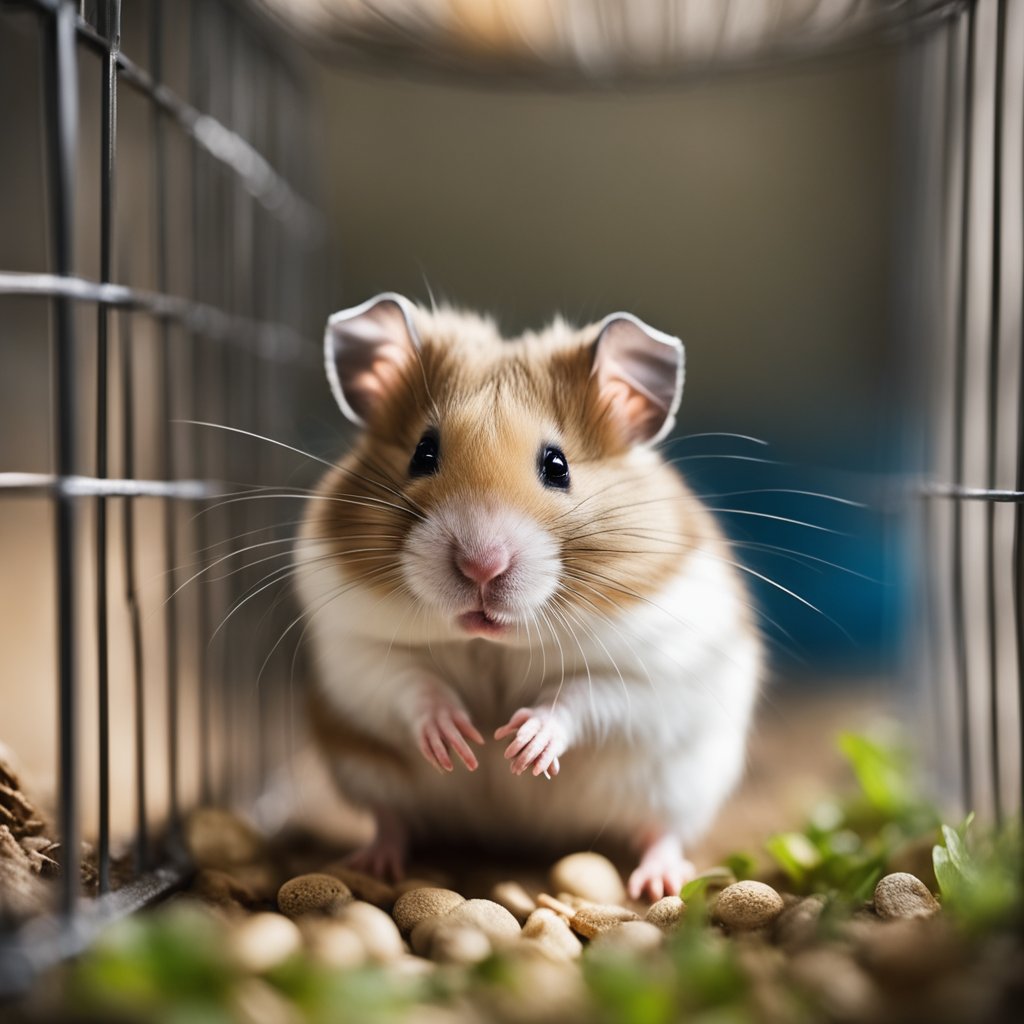How to Tell If Your Hamster is Sad: Signs to Look For
If you’re a hamster owner, you want to make sure that your pet is happy and healthy. However, it can be difficult to tell if your hamster is sad or experiencing any other negative emotions. Hamsters are known for their energetic and playful behavior, but they can also experience stress and sadness just like any other animal. In this article, we’ll discuss some of the signs that may indicate that your hamster is sad and what you can do to help.
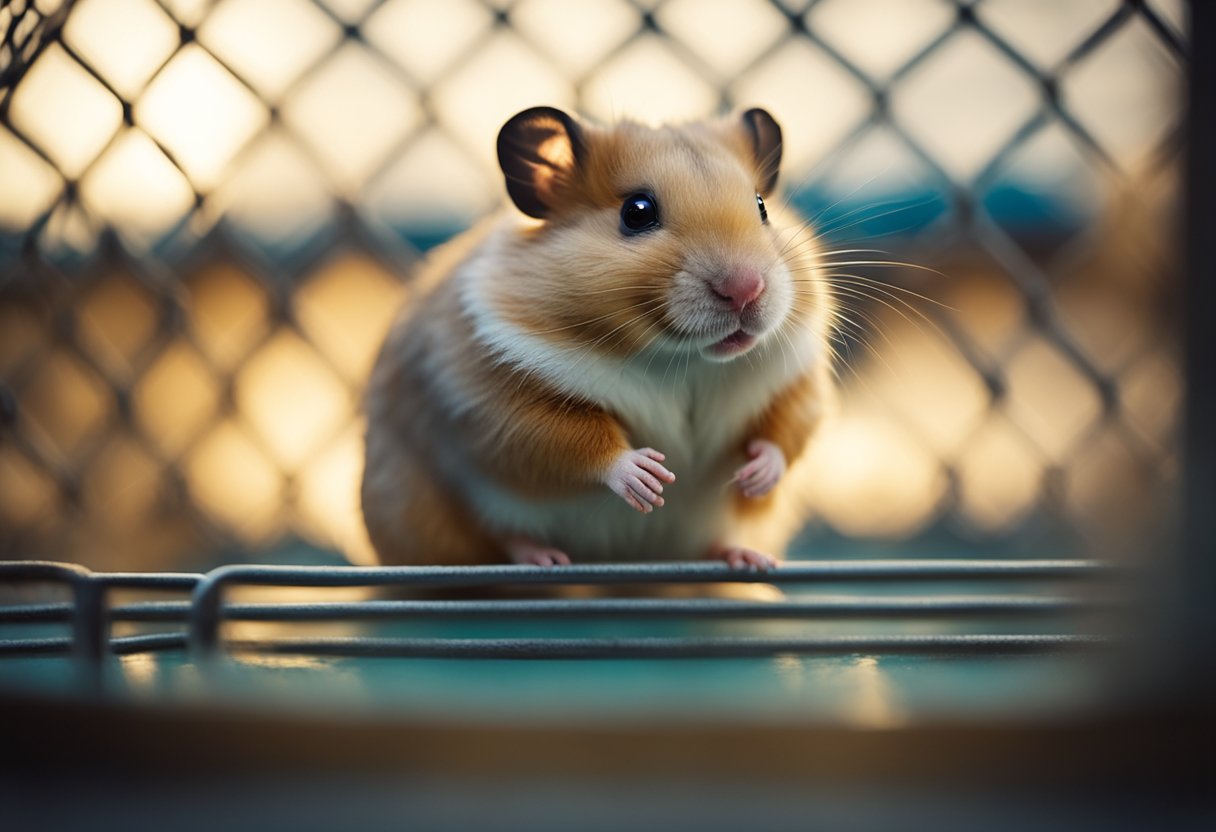
Understanding Hamster Behavior is key to identifying if your hamster is sad. Hamsters are social creatures that require mental and physical stimulation. Without proper care and attention, they may become bored and unhappy. Some of the common signs of a sad hamster include lethargy, lack of appetite, repetitive behaviors, excessive grooming, and cage aggression. By learning to recognize these signs, you can take steps to improve your hamster’s living conditions and overall well-being.
Resources are available to help you better understand your hamster’s behavior and how to care for them properly. From online forums to books and articles, there’s a wealth of information available to hamster owners. By educating yourself on the best practices for hamster care, you can provide your pet with the best possible life.
Key Takeaways
- Hamsters are social creatures that require mental and physical stimulation to stay happy and healthy.
- Signs of a sad hamster include lethargy, lack of appetite, repetitive behaviors, excessive grooming, and cage aggression.
- Educating yourself on hamster behavior and proper care can help you provide your pet with the best possible life.
Understanding Hamster Behavior
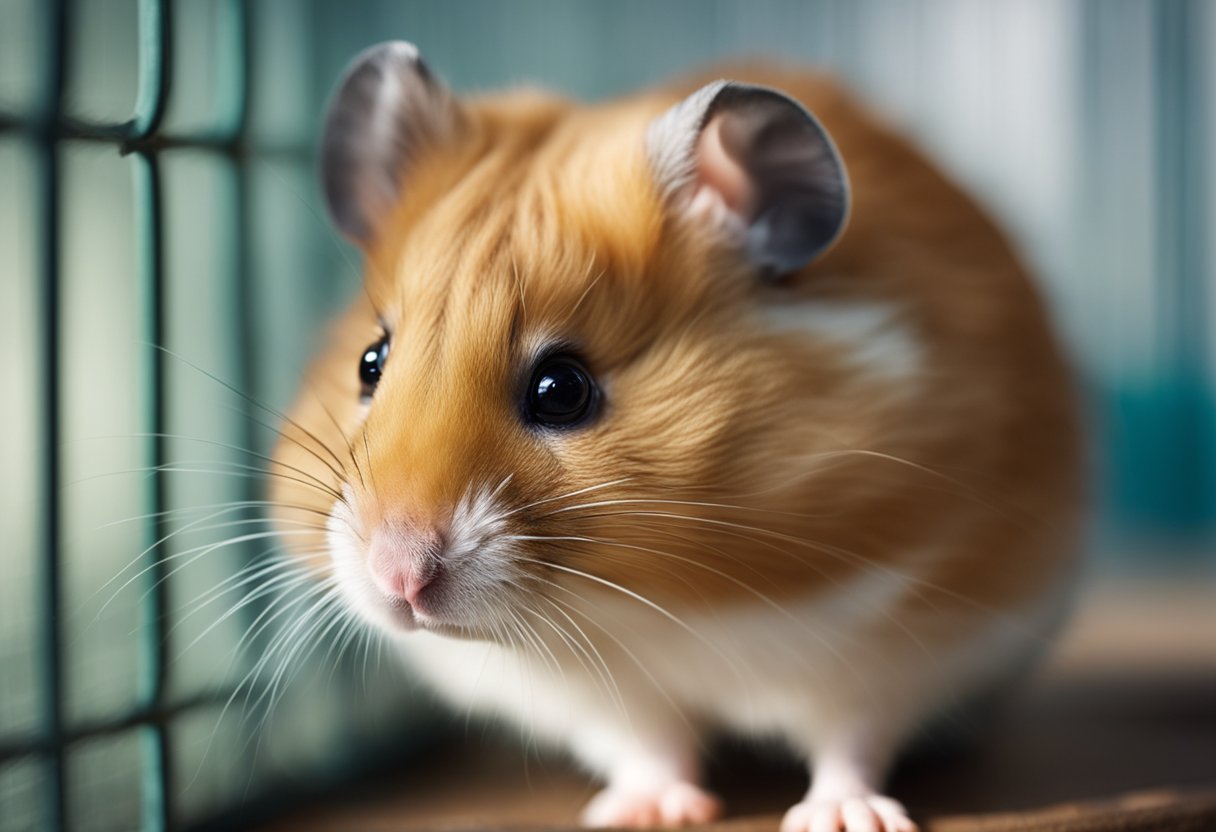
Hamsters are social creatures, and they exhibit different behaviors depending on their emotional state. Understanding your hamster’s behavior is essential to keep them happy and healthy. In this section, we will discuss the signs of a happy and sad hamster.
Signs of a Happy Hamster
A happy hamster is an active and curious hamster. They will explore their surroundings, run on their wheel, and play with their toys. Happy hamsters also have a healthy appetite and will eat and drink regularly. They are also social and enjoy interacting with their owners.
Signs of a Sad Hamster
A sad hamster exhibits different behaviors than a happy hamster. They may become lethargic and spend more time sleeping than usual. They may also lose interest in playing with their toys and interacting with their owners. A sad hamster may also show signs of aggression, such as biting or scratching.
Other signs of a sad hamster include excessive grooming, biting the cage, and pacing back and forth. These behaviors can indicate that your hamster is stressed or unhappy with their living conditions. It is essential to provide your hamster with a comfortable and stimulating environment to prevent these behaviors.
In summary, understanding your hamster’s behavior is crucial to keep them happy and healthy. A happy hamster is active, curious, and social, while a sad hamster may exhibit lethargy, aggression, and other unusual behaviors. By providing your hamster with a comfortable and stimulating environment, you can ensure that they stay happy and healthy.
Resources
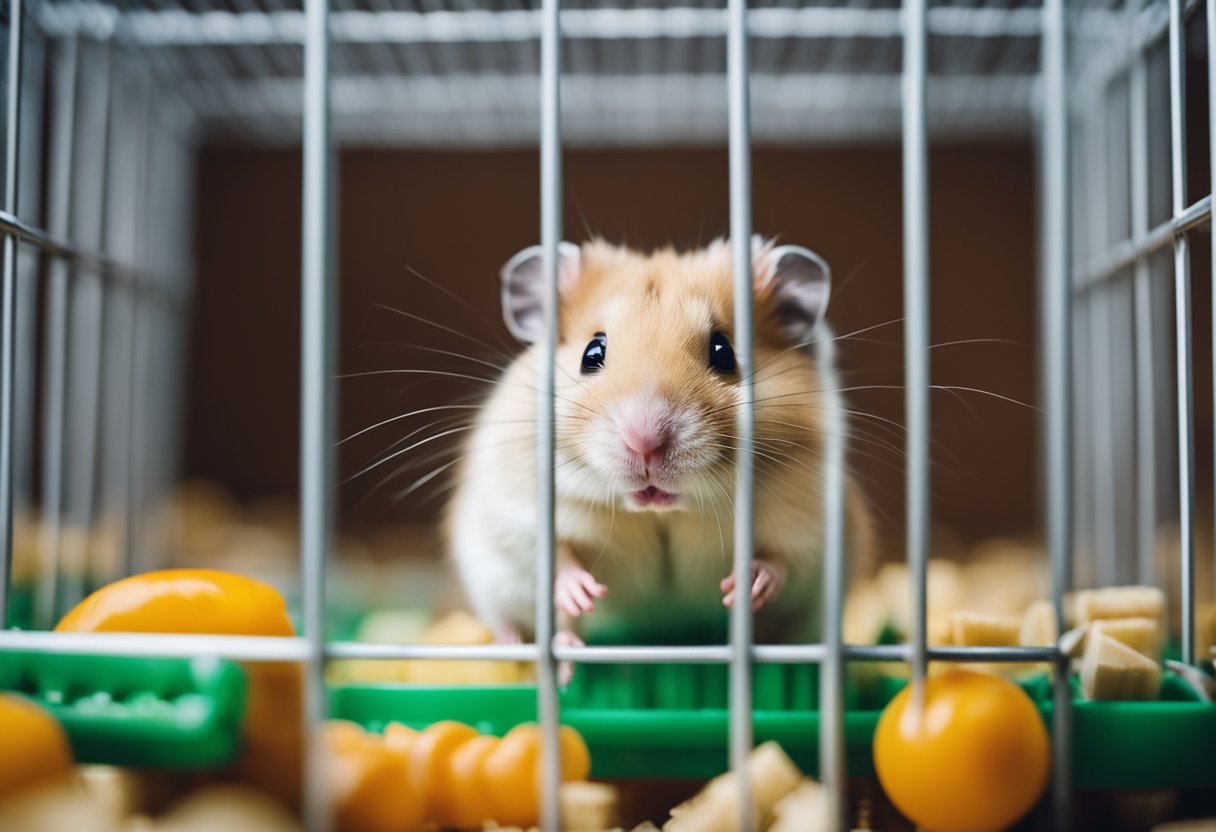
If you suspect that your hamster is sad, it’s important to take action to help them feel better. Here are a few resources to help you identify and address your hamster’s emotional well-being:
- Caring Pets: This website provides a list of 6 signs that your hamster may be stressed or sad, including biting the cage, lethargy, excessive grooming, and pacing. They also offer tips for how to help your hamster feel happier, such as providing them with plenty of toys and hiding places.
- Tiny Pet Tales: This resource offers information on how to tell if your hamster is sad, including signs of lethargy, inactiveness, and lack of interaction. They also suggest that lack of space and mental stimulation can trigger sadness in hamsters. The website provides tips for how to cheer up your hamster, such as providing them with a larger cage and plenty of toys to play with.
- Small Pet Family: This website provides a list of 5 signs that your hamster may be sad, including repetitive behaviors, cage aggression, and a change in exercise habits. They also offer advice for how to tell if your hamster is unhappy, such as observing their behavior and looking for changes in their eating habits.
Remember, if you suspect that your hamster is sad or experiencing any other health issues, it’s important to consult with a veterinarian who specializes in exotic pets. They can help you identify the cause of your hamster’s behavior and provide you with advice for how to help them feel better.
Conclusion
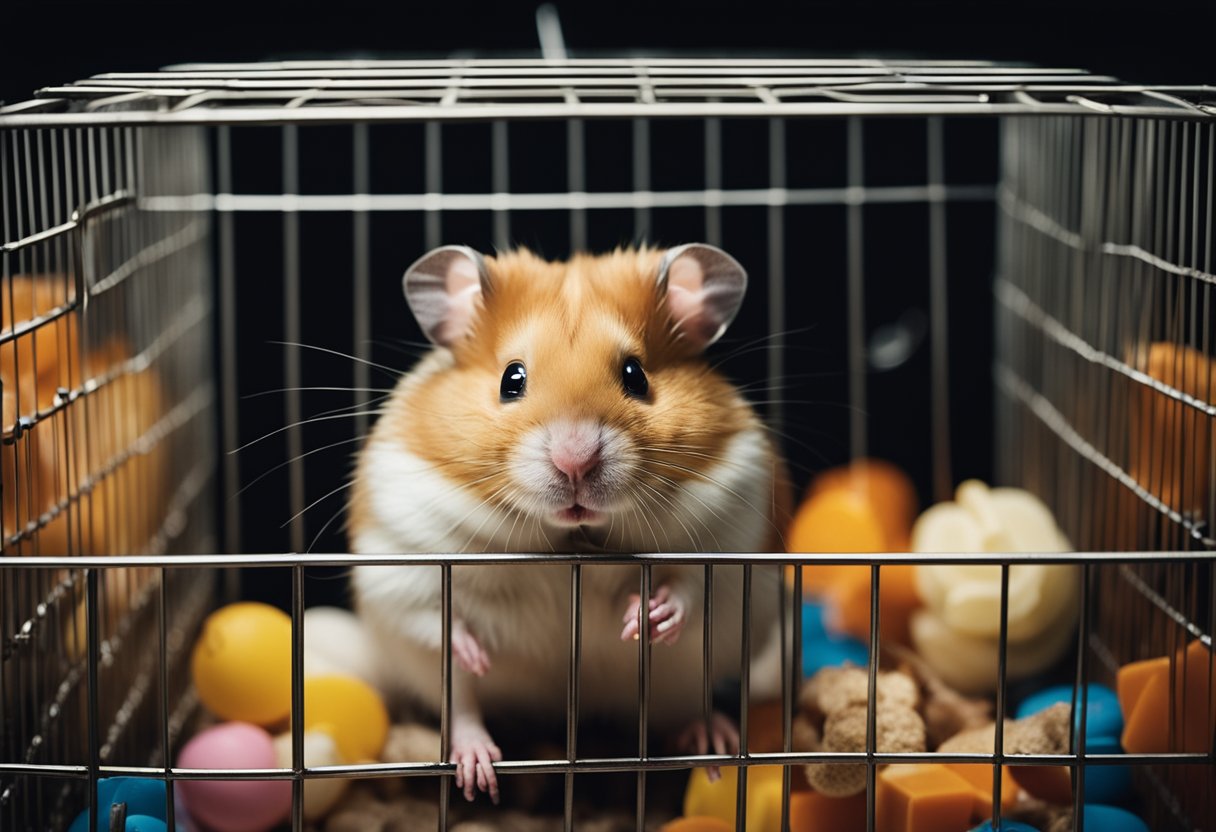
In conclusion, it is important to pay attention to your hamster’s behavior and body language to determine if they are sad or stressed. Common signs of a sad hamster include lethargy, loss of appetite, decreased grooming, sleep disturbances, and reduced social interaction. They may also show signs of stress such as biting their cage bars or self-mutilation.
To prevent your hamster from becoming sad or stressed, make sure they have a spacious and stimulating environment with plenty of toys and hiding spots. Provide them with a balanced diet and fresh water, and interact with them regularly to keep them socialized.
If you notice any signs of sadness or stress in your hamster, consult with a veterinarian who specializes in exotic animals. With proper care and attention, you can ensure that your hamster lives a happy and healthy life.
Frequently Asked Questions
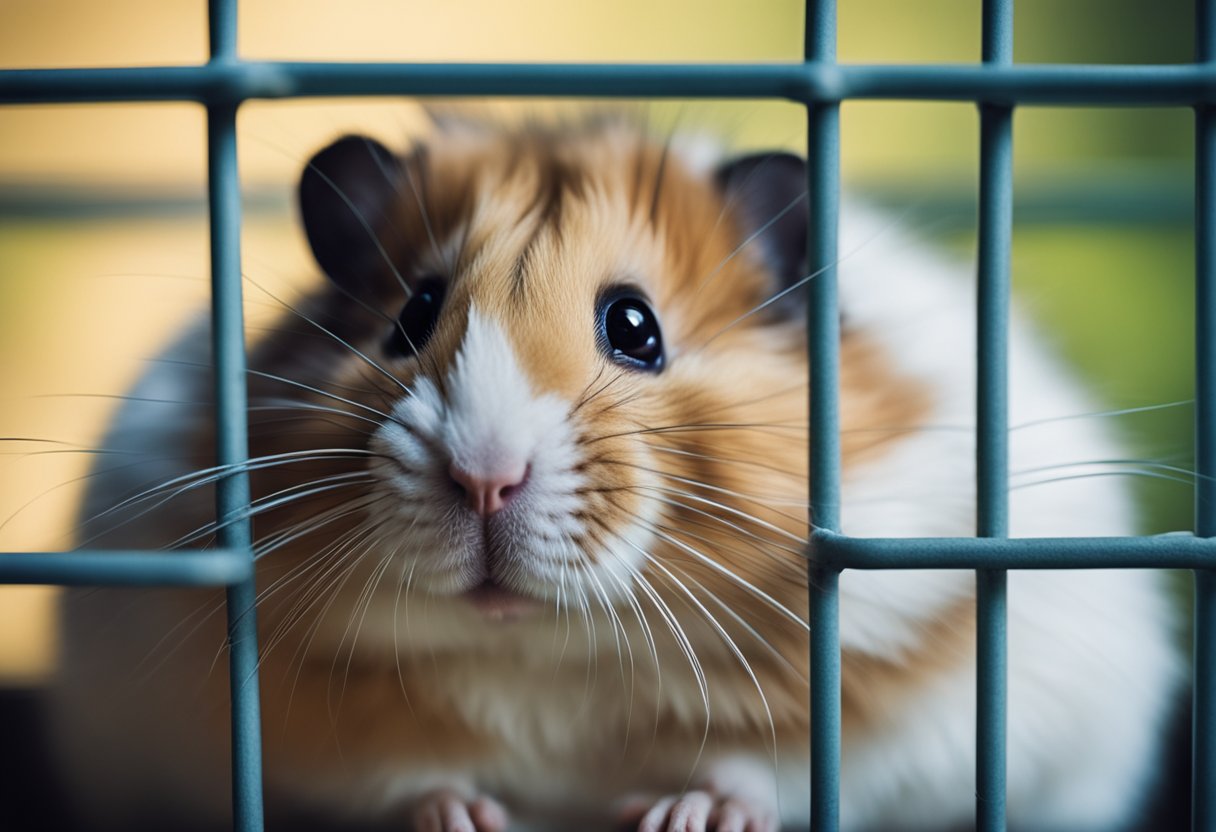
What are the signs of a depressed hamster?
Hamsters can become depressed and exhibit several signs indicating their low mood. These signs include lethargy, lack of energy, decreased appetite, and a decrease in activity level. Depressed hamsters may also display unusual behavior like biting the cage, excessive grooming, and pacing. If you notice any of these signs, it is essential to take immediate action to improve your hamster’s mood.
How can you tell if a hamster is happy or stressed?
Hamsters can communicate their emotions through their body language. A happy hamster will typically be active, curious, and playful. They will also have a healthy appetite and groom themselves regularly. On the other hand, a stressed hamster will display signs of anxiety like biting the cage, hiding, and being less active. They may also display signs of aggression and show no interest in food or water.
What behaviors indicate that my hamster might be unhappy?
Hamsters can exhibit various behaviors that indicate their unhappiness. Some of these behaviors include trying to escape the cage, repetitive behaviors, cage aggression, change in exercise habits, and excessive grooming. If you notice any of these behaviors, it is essential to identify the root cause of your hamster’s unhappiness and take appropriate measures to rectify the situation.
How can I tell if my hamster enjoys its environment?
A happy hamster will enjoy its environment and display several signs indicating its contentment. These signs include being active, playing with toys, interacting with its surroundings, and eating and drinking regularly. A happy hamster will also have a clean and well-maintained cage with plenty of space to move around.
In what ways can I improve my hamster’s mood?
There are several ways to improve your hamster’s mood and make it happy. These include providing a clean and spacious cage, a balanced diet, fresh water, and plenty of toys and activities to keep it entertained. You can also interact with your hamster regularly, talk to it, and handle it gently to build a bond of trust.
What should I look for to ensure my hamster is content with me?
To ensure that your hamster is content with you, look for signs of trust and affection. These signs include your hamster approaching you, climbing onto your hand, and allowing you to handle it without biting or scratching. A content hamster will also display signs of happiness when you interact with it, like purring or squeaking.
